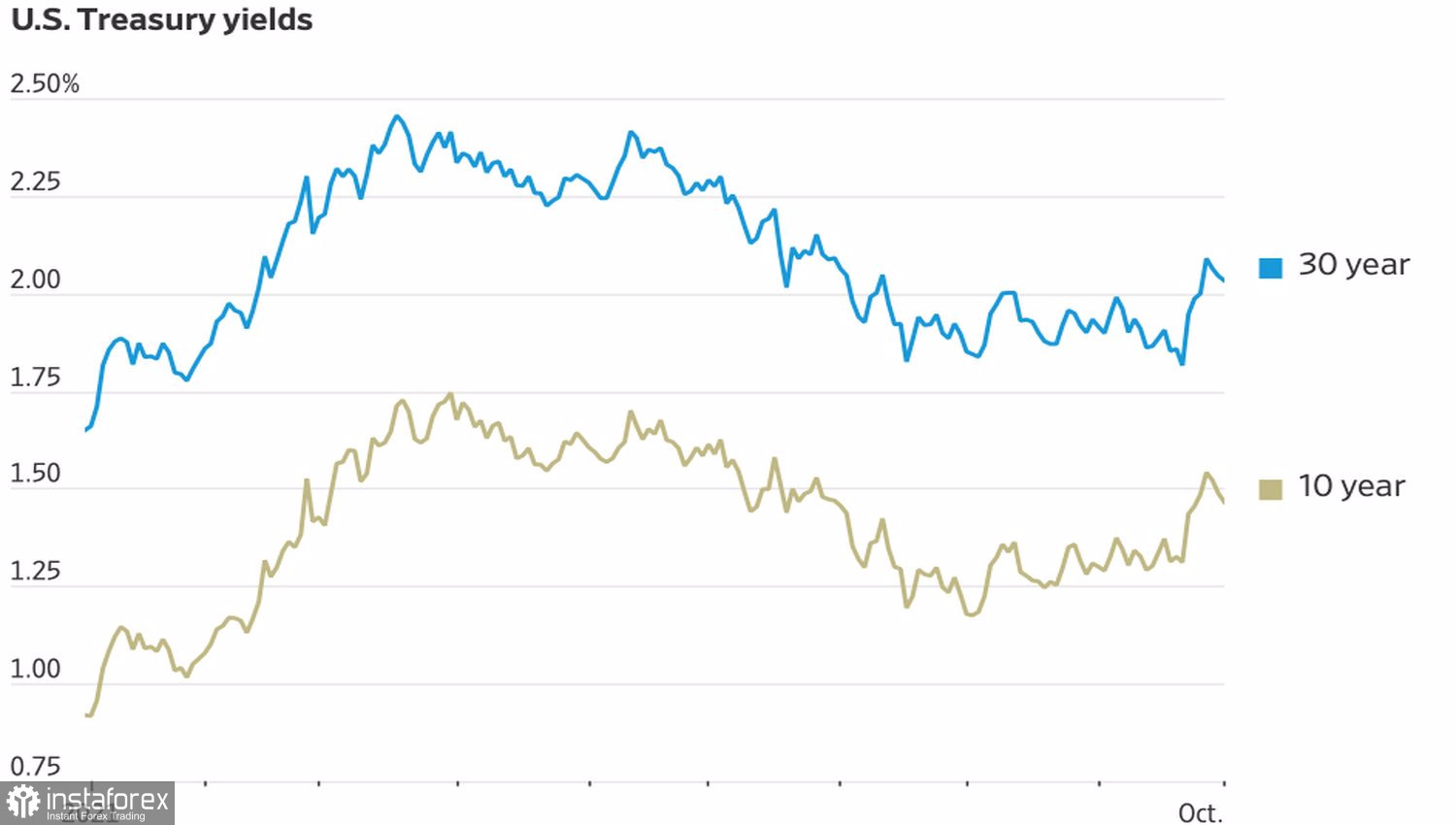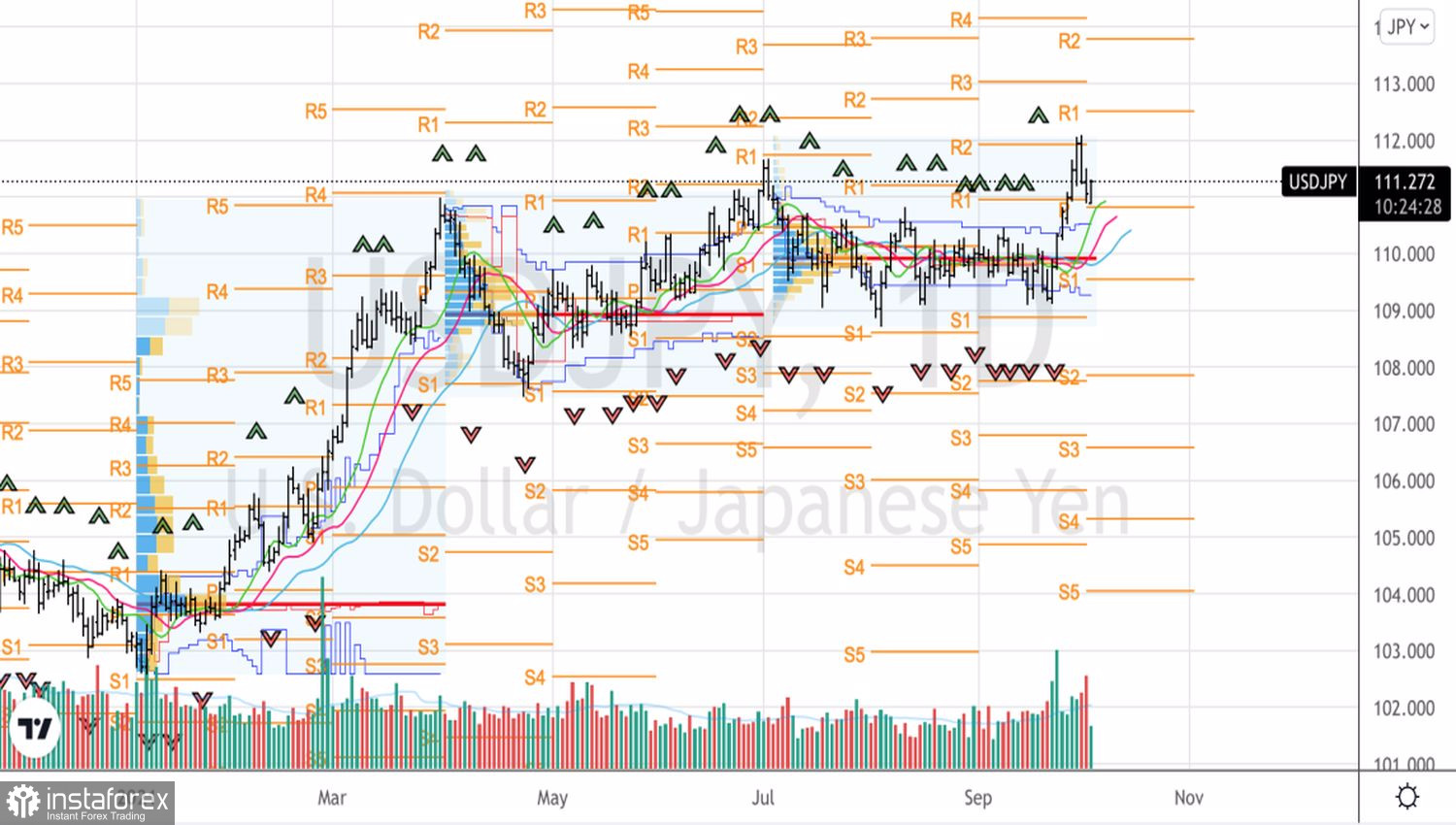After a rapid growth in the last week of September, the USDJPY pair decided to go for a correction, taking advantage of the fall in Treasury yields and the rise in US stock indices after their almost 5% drawdown in the first month of autumn. The yen's exchange rate is largely dependent on external factors, so the dynamics of the American stock market mean more to it than the willingness of the new leader of the Liberal Democratic Party, Fumio Kishida, to take the post of prime minister and hold parliamentary elections on October 31.
For a long time, the Bank of Japan has been deliberately keeping local bond yields close to zero in order to stimulate consumer prices. At the same time, the dynamics of USDJPY is influenced primarily by the differential rates of the debt markets of the United States and Japan. The stability of the latter allows them to be excluded from the equation. It turns out that the higher the yield of Treasury bonds rises, the higher the quotes of the analyzed pair. Indicative in this regard are the March and September events, when borrowing costs in the United States rose, and the yen fell into a wave of sales.
Dynamics of the yield of US Treasury bonds

At the same time, there is a significant difference between the spring and autumn events: before, rates on US bonds were raised in the hope of accelerating economic growth, now - because of the Fed's hawkish rhetoric. Despite the slowdown in the US economy, the Central Bank, fearing high inflation, is ready to normalize monetary policy. The differences are clearly visible in the dynamics of shares: in March, securities of cyclical companies grew along with the rising yields on debt obligations, in September they fell.
What's next? Is what we saw at the end of the first month of fall a belated correction in the bond market, or is it a trend reversal? In my opinion, it doesn't matter. The main thing is that 10-year debt rates are quite capable of rewriting the March highs by 1.75%, which will be a strong argument in favor of the continuation of the USDJPY rally. The fact is that the dynamics of the number of COVID-19 cases and leading economic indicators across the United States indicate that after the inexpressive July-September, the US GDP will delight in October-December. Coupled with the Fed's gradual abandonment of the $120 billion quantitative easing program, this will further raise the yield on Treasury bonds and the quotes of the analyzed pair.
Does the yen stand a chance? If the epidemiological situation in the United States suddenly begins to deteriorate, will the Fed abandon the idea of normalizing monetary policy? I don't think so. Jerome Powell has already proven that he is not afraid of a pandemic. In addition, the spread of the Delta strain will only exacerbate supply chain problems, which will keep inflation at elevated levels for longer than the central bank predicts.
Technically, the inability of the bears on USDJPY to storm the support at 110.85-110.95, identified using pivot levels, is a sign of their weakness and a reason to form longs with targets at 111.9, 112.5, and 113.8.
USDJPY, Daily chart

 English
English 
 Русский
Русский Bahasa Indonesia
Bahasa Indonesia Bahasa Malay
Bahasa Malay ไทย
ไทย Español
Español Deutsch
Deutsch Български
Български Français
Français Tiếng Việt
Tiếng Việt 中文
中文 বাংলা
বাংলা हिन्दी
हिन्दी Čeština
Čeština Українська
Українська Română
Română

